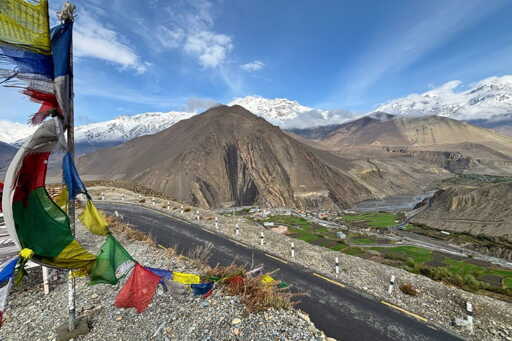MUSTANG, Nepal — On a crisp morning after a night of rain, the breeze diffuses the smell of wet earth in the village of Kagbeni in Mustang, Nepal’s trans-Himalayan frontier. The perennial Kali Gandaki River, rejuvenated by the rain, roars with its silt-laden water as scores of pilgrims carry packages of grain, flowers, saffron powder and sesame seeds to offer to their ancestors. The narrow alley leading to the riverbanks is soon converted into a parking lot for idling motorcycles, buses and SUVs waiting for the pilgrims to finish their prayers, take a dip in the river, and hand over the offerings to the sacred river — believed to carry these to their ancestors — before heading to the Muktinath temple upstream. As if the river slices time into two, one of the banks reflects the present and the other tells a tale from a distant past. On the far side lies a fragile slope, constantly eroded by the river’s flow and the powerful winds that have shaped the sedimentary rocks ever since the Himalayas began rising and the ancient Tethys Sea disappeared during the Cenozoic Era. On the near side, on the other hand, stands a row of concrete lodges, hotels and tea houses that are symbols of the rapid transformation as climate change and mass tourism converge in the region. Pilgrims make offerings to their ancestors on the banks of the Kaligandaki river in Kagbeni, Mustang. Image by Abhaya Raj Joshi/Mongabay. One of those new buildings belongs to…This article was originally published on Mongabay
From Conservation news via this RSS feed


